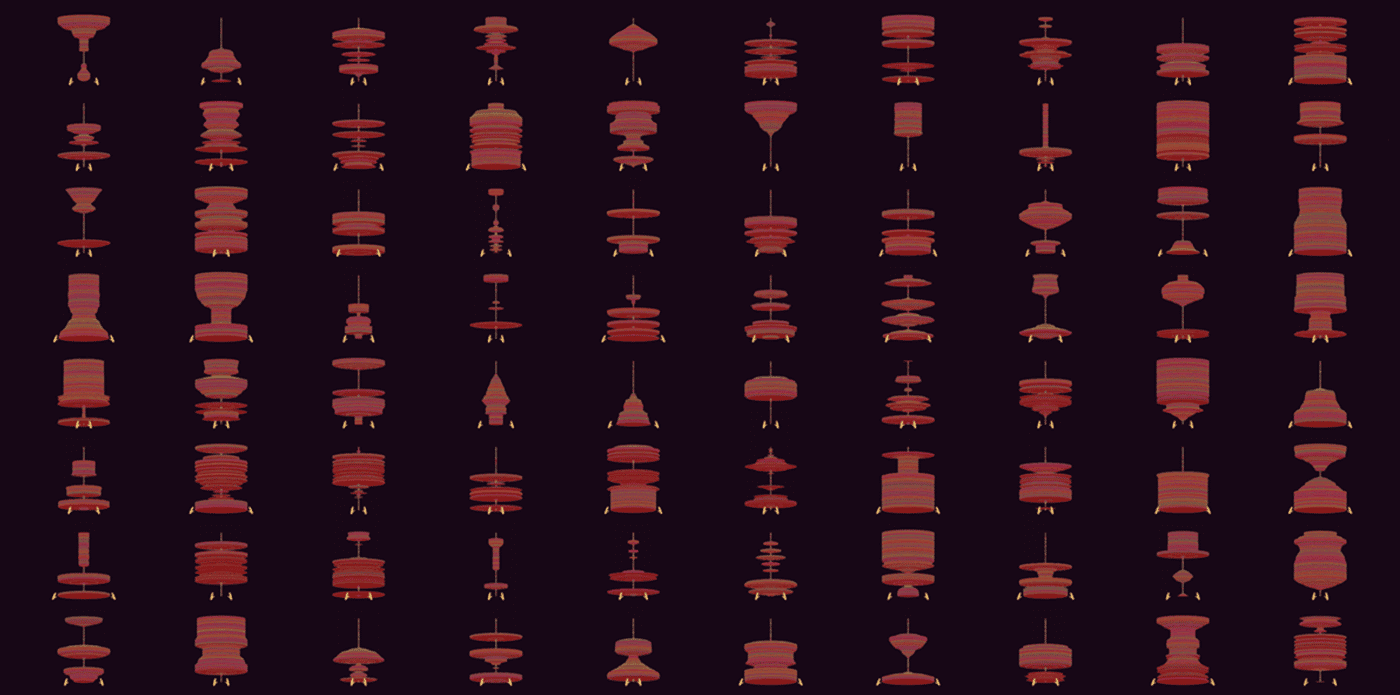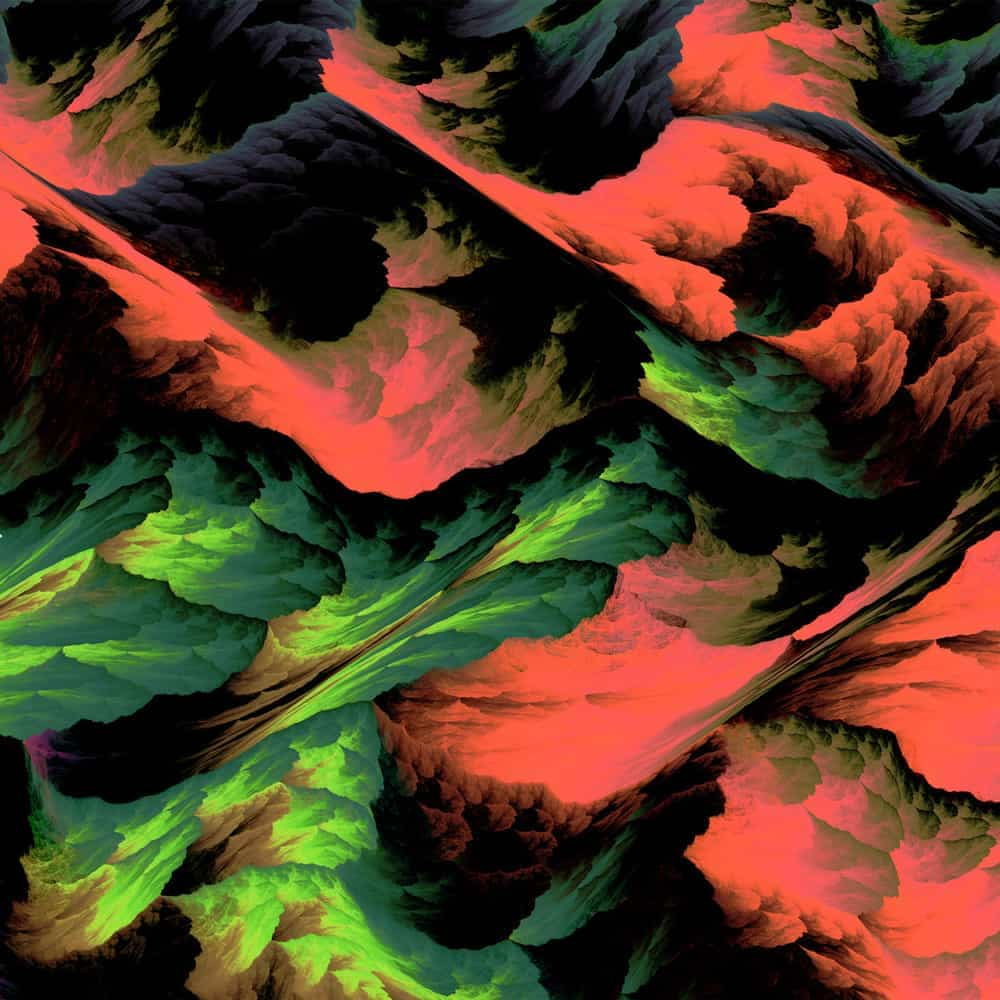#InConversation with Pranjal Kaila
By Davangi Pathak | Apr 12 2024 · 10 mins
Ajeeb AKA Pranjal Kaila's practice is an eccentric combination of tools and concepts that he uses to make paradoxical works that symbolise our space in the universe. He enjoys creating interactive spatial and sensory experiences. Through this interaction we will dig deep into Pranjal’s journey and how these artworks are developed from code and generative algorithms along with Kaila's visual sensibilities, to create unique moments of reflection for the spectator.
Davangi: Pranjal you have a background in Communication Design. How did you find yourself
inclined towards practising digital art? How did it start and what was the inspiration behind it?
Ajeeb: My mother is an artist, and since I was a child, she used to draw little characters for me on my birthdays. Those drawings left a lasting impression on me, and early on, I realised the power of art to evoke emotions and memories. At the same time, I was a huge science nerd; I used to read encyclopaedias as a hobby. My fascination with the intersection of art and technology inspired my venture into digital art.
Davangi: In our earlier conversation you mentioned that you get intrigued by the fact how synthetic can create something so organic or emotional. Could you please elaborate on this. (readers would like to know this approach)
Ajeeb: On the surface, fostering emotional connections through technology may seem paradoxical, given its foundation in binary code and mechanical processes. However, I find inspiration in a profound passage from one of my favorite books, "Zen and the Art of Motorcycle Maintenance" by Robert M. Pirsig. "The Buddha, the Godhead, resides quite as comfortably in the circuits of a digital computer or the gears of a cycle transmission as he does at the top of the mountain or in the petals of a flower. To think otherwise is to demean the Buddha - which is to demean oneself."
By embracing the inherent spirituality and interconnectedness of all things, we can transcend the boundaries between the natural and the artificial, creating art that resonates deeply with the human experience.
Davangi: You are always keen to explore the alternate possibilities - What world could?! How does your practice help you to explore such possibilities?
Ajeeb: It’s a paradoxical realisation that while our existence may seem minuscule in the grand scheme of the cosmos, our capacity for creation and innovation is monumental. I am driven by a desire to contribute something unique and unprecedented to the tapestry of existence. I see each artwork as an opportunity to carve out a new space in the universe, to bring forth something that hasn't existed before and may never exist again.
Davangi: Visual space and colours are important elements in your body of work. Please tell us more about it and how significant it is for your practice?
Ajeeb: I believe that in any visual art, space and colors are integral components, serving as both tools of expression and avenues for exploration. They play a pivotal role in shaping the mood, atmosphere, and emotional resonance of my artworks, inviting viewers into immersive and evocative experiences.
Davangi: Speaking about your interests, you have always been fascinated by space and aliens.
Please tell us more about it and how you incorporate that in your body of work?
Ajeeb: Incorporating themes of space and aliens into my body of work allows me to explore existential questions about our place in the universe, the nature of consciousness, and the potential for life beyond Earth. It's a deeply philosophical and introspective journey that invites viewers to contemplate their own existence in the context of the cosmos.
Davangi: You like to watch animes like Neon Genesis, Attack on Titans, Akira, Cowboy bebop & etc. What elements of anime help you to shape your artistic practices? Would you like to mention any movie or literature that became your initial source of inspiration?
Ajeeb: One element of anime that particularly resonates with me is its ability to seamlessly blend genres and explore complex narratives that transcend traditional storytelling conventions. Additionally, the works of authors such as Liu Cixin, Isaac Asimov, and Arthur C. Clarke have also been influential in shaping my artistic vision.


Unique, Interactive exhibit by Ajeeb, 2017: Forms created by visitors at the exhibition, it was later turned into a poster.
Davangi: Would you like to mention any of your favourite/idol artists or practioners that you look
forward to?
Ajeeb: Ryoji Ikeda, James Turell, Nirvair Rai.
Davangi: Would you like to tell us about any future projects? Will you be experimenting with different Mediums?
Ajeeb: Since last year, I have been working with my closest friends Aravind Narayanan, Pradhyumn Kag, and Vivek Mishra to develop a transmedia fashion brand called Fetus. Fetus® is a narrative-driven streetwear brand that operates at the intersection of fashion, culture, and technology. Through the lens of our protagonist, Fetus, who was banished from his planet and now resides in Delhi, the brand is founded on themes of identity and nonconformity.
Our goal is to become a leading fashion house, utilising the power of web3 technology and a strong narrative to create an experience for our customers in both physical and digital realms.
Click here to view Pranjal's Online Viewing Room and learn more about his practice.


